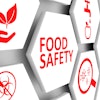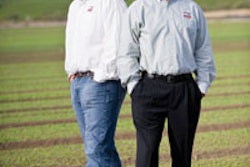Trust for America's Health (TFAH), a Washington-based, non-profit consumer advocacy organization, has released a report that identifies major gaps in the nation's food safety system, including obsolete laws, misallocation of resources and inconsistencies among major food safety agencies.
"Our goal should be reducing the number of Americans who get sick from foodborne illness. But we can't adequately protect people from contaminated foods if we continue to use 100 year-old practices," says Jeff Levi, executive director of TFAH. "We need to bring food safety into the 21st century. We have the technology. We're way past due for a smart and strategic upgrade."
Some problems outlined in the report, Fixing Food Safety: Protecting America's Food from Farm-to-Fork, include:
• The U.S. food safety system has not been modernized in over 100 years;
• The bulk of federal food safety funds are spent on outdated practices of inspecting every poultry, beef and pork carcass, even though changing threats and modern agriculture practices and technology make this an unproductive use of government resources;
• Inadequate resources are spent on fighting modern bacteria threats, such as trying to reduce Salmonella or dangerous strains of E. coli;
• In the past three years, the main food safety function at FDA has lost 20 percent of its science staff and 600 inspectors;
• Gaps in current inspection practices mean acts of agroterrorism-such as contamination of wheat gluten or botulism-could go undetected until they are widespread;
• While 15 federal agencies are involved in food safety, the efforts are fragmented and no one agency has ultimate authority or responsibility for food safety;
• Only one percent of imported foods are inspected. Approximately 60 percent of fresh fruits and vegetables and 75 percent of seafood consumed in the U.S. is imported; and
• States and localities are not required to meet uniform national standards for food safety. Approximately 76 million Americans-one in four-are sickened by foodborne diseases each year.
A 2007 public opinion poll conducted by TFAH found that 67 percent of Americans are worried about food safety and that public concerns about food safety rank higher than Americans' concerns about a biological or chemical attack and natural disasters like Hurricane Katrina.
The TFAH report follows a series of studies by experts raising concerns about America's food safety, including a 2007 review by the U.S. Food and Drug Administration's Science Board that concluded that the U.S. food supply "grows riskier each year" and a Government Accountability Office report that found federal oversight of food safety to be one of the government's "high risk" programs.
TFAH calls for a series of actions to help the nation modernize the food safety system by using strategic inspection practices and state-of-the-art surveillance. While many of the recommendations are focused on government actions, the report finds that fixing food safety will require a collaborative effort by food producers, processors, distributors, retailers and consumers, combined with strong leadership from the federal, state and local government.
Some of the recommendations include:
• Repeal outdated end-product and processing plant inspection mandates and shift the emphasis of inspection practices to the prevention of outbreaks and illnesses through the entire food production process and supply chain;
• Create mechanisms that allow inspection practices to keep pace with changes in the industry;
• Establish uniform performance standards and best practices that are enforceable through actions including detention and recall authority and civil penalty authority;
• Require food safety education for commercial food handlers;
• Improve monitoring of foreign imports and international practices; and
• Strengthen the FDA with increased funding and aligning resources with high risk threats, with the long-term goal of realigning all federal food safety functions.

















